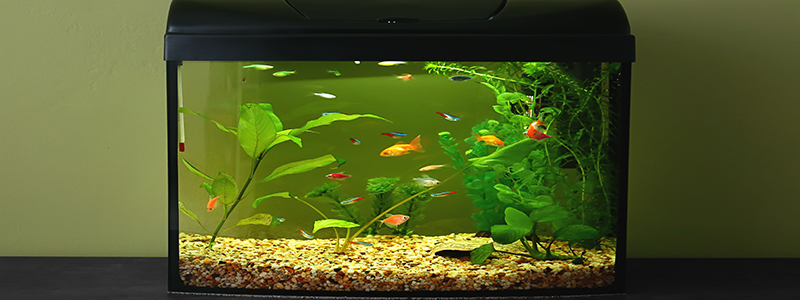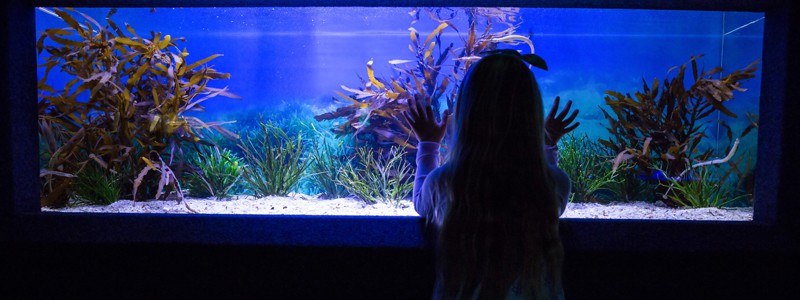When it comes to setting up the perfect habitat for your fish, the list of required items can seem endless. Every fish keeper wants their fish to be healthy and cared for, and creating a balanced environment is the first step to success. One of the most marketed items for aquariums is an air pump, or air stones, to keep the water properly oxygenated. However, the fish-keeping community has often discussed whether or not these items are strictly required to run a successful fish habitat.
Is an air pump necessary for an aquarium? In most cases, no. While it is important for the water in your aquarium to maintain a healthy level of oxygen, many aquariums do not need an extra air pump to reach that level. It all depends on the details of your aquarium setup. To better understand whether or not your fish tank would benefit from an air pump, let’s take a closer look at what an air pump does.
What is an Air Pump? How does it Work?
Air pumps are external pieces of equipment that force air into your aquarium. When the air is released into the water, bubbles form and the water is agitated, which increases the oxygen levels in your tank. It is important that the water in your aquarium is kept oxygenated because fish filter the oxygen through their gills to ‘breathe’.
Without proper aeration, your fish will have a hard time getting the oxygen that they need to survive. In the wild, water surfaces of lakes, oceans and rivers are in constant motion, and the large surface area makes for a constant exchange of oxygen in the water. In a home aquarium environment, it is necessary to facilitate this exchange ourselves. However, there are alternatives to air pumps to help with this process.
Many fish tanks are able to maintain a healthy level of oxygen in the water without extra assistance from an air pump. Air can enter the water when the surface is agitated, and many water filters achieve this when the filtered water is dropped back into the aquarium. If your filter pours water back into the aquarium, and you can see the movement, it is likely a perfect amount of surface agitation to keep your tank well aerated. Filters also aid in aeration by circulating water throughout the tank, so that the water on the bottom of the tank can cycle upwards to the surface. This keeps the oxygen levels even throughout the tank.
It is also possible to aerate your fish tank by hand, simply by scooping up a bit of the aquarium water and pouring it back in from a small distance. The waterfall effect acts similarly to an external water filter and agitates the surface of the water. You might notice some bubbles forming where the stream of water hits the surface of your tank- this is aeration in action.

Is an Air Pump the Same Thing as a Filter?
Air pumps and filters are two separate items. The filter has many functions and is a necessary component of your aquarium. Filters remove waste from the water and provide circulation and aeration to your tank. The air pump is a separate item from the filter and its sole purpose is to introduce oxygen to the tank.
However, some basic fish tank filters are in fact powered by an air pump, like a sponge or corner filter. In this instance, both components will usually come together as part of a kit. If this is the only filter you will be using for your aquarium, then it will be necessary to keep the air pump running.
When is an Air Pump Necessary?
Air pumps are usually superfluous, but there are certain situations where you might want to consider getting one, even if your aquarium has a proper filtration setup. Warm water does not hold oxygen as well as cold water, so tropical aquariums often benefit from an air pump. Deep tanks are also more likely to have low oxygen problems than shallow tanks, as it can be more difficult to ensure proper water circulation. An air pump in this situation can help evenly distribute the oxygen levels from the surface to the bottom.
Planted tanks that feature lots of live plants can also benefit from an air pump. Although live plants release oxygen into the water during the day, at night they release carbon dioxide (This is part of the cycle of how plants “breathe” using photosynthesis). Too much carbon dioxide in the environment can cause your fish to suffocate.
Large aquariums that are heavily stocked with other fish can also cause imbalances in oxygen levels. The greater the number of fish, combined with a larger and deeper tank size, can result in an oxygen deficiency. All of the fish will be competing for the oxygen in the tank water. An air pump is beneficial to a large tank, as it will help replenish the oxygen it is consumed by the fish.
Potential Negatives of an Air Pump
With those benefits in mind, it is also important to consider the possible negatives of installing an air pump. Although many fish enjoy having the added bubbles in their environment, there are some species of fish who prefer still water and are sensitive to strong water currents; such as Bettas. It is also important to note that many of these air filters require vibration to force the bubbles into the water, which can be noisy, especially for a fish tank in a bedroom. Additionally, air pumps often run in addition to your filter, resulting in a higher energy cost.
Monitoring your Oxygen Levels
Air pumps are optional, but beneficial in certain situations. If you are wondering whether or not you need an air pump, a good place to start is to check the oxygen levels in your tank.
It is not possible to tell whether your aquarium is well aerated by just looking at it. Luckily, many pet supply stores sell kits to test the oxygen levels of your tank. There are two basic types of tests: dissolved oxygen test kits or dissolved oxygen probes. The first test is similar to a pH test kit, with a colorimetric guide you can match up to your water sample. The probe is an actual device that is submerged in your tank and measures the oxygen levels digitally. These tests can be pricey, although accurate.
However, it is also possible to gauge the oxygen levels of your tank by studying the behavior of your fish. Low oxygen levels can cause your fish to gasp for air at the top of the tank. This can be particularly noticeable in fish that are usually bottom feeders. Other signs of an oxygen imbalance include rapid gill movement and low activity levels. If you have a particularly active species of fish, a sudden change of pace can be because of oxygen level concerns.
Added Benefits of an Air Pump
If you think that your aquarium might benefit from an air pump setup, you are probably interested in learning more about the benefits and shortcomings of this device. Aside from providing your tank with proper aeration, an air pump can also be an aesthetically pleasing addition to your tank. There are many fish tank decorations that use an air pump to provide movement, like an ornamental figure that moves when air bubbles build up around it. Other air pumps create a constant stream of bubbles which can add visual interest and a soothing motion in your tank that is enjoyable to look at.
Another added benefit is that these bubbles can often be a source of entertainment for your fish. There is many fish that like to chase the bubbles or swim in and out of the current that the air pump creates. However, it is important to make sure that the air pump is not too strong for your fish- smaller fish might be swept up in the current from an overpowered air pump.
Setting up an Air Pump
If you have decided that an air pump is right for you, most of them are very simple to install. Most of these pumps have 3 components: the pump itself, which connects to an outlet, air tubing, and an air stone. The tubing must be connected to the pump and the air stone, with the air stone submerged in the water. We personally recommend the Tetra Whisper Air Pump.
For safety reasons, it is recommended that a check valve also be installed, which prevents water from going back into the air pump in the event of a power outage. This device requires the air tubing to be cut, and the valve acts as a connector between the two pieces of tubing.
Air pumps are not strictly necessary for an optimum aquarium setup, but they do have their advantages in certain situations. Keeping an eye on the oxygen levels as a part of your regular maintenance routine can help determine if an air pump is a good choice for your habitat.
Related Topics
If you like the article above, here are some other similar articles you should check out!
Aquarium Battery Backup for Power Outages






